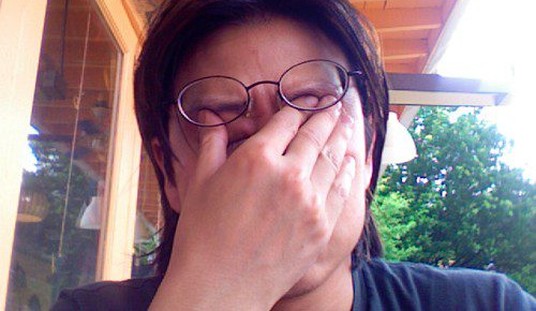For a concealed carry gun, whether as a police officer’s backup weapon or the sidearm of a citizen licensed to carry, there are more choices than ever. Compact automatics are getting a lot of attention, and the advances in their designs are impressive. For a long time however, “six for sure” has been a slogan to live by for folks who have relied on revolvers, and short-barreled revolvers in particular are as popular as ever for concealed carry.
The main reasons for the snubby’s continuing appeal are easy concealment and, with a lot of newer designs, light weight. Many of today’s snubbies have alloy frames and weigh in the 12-14 ounce range when empty. You can carry one all day and you’ll hardly know it’s there. Some are rated for .38 Special +P, and there are even alloy-frame snubbies chambered for .357 Magnum. These little pocket rockets pack a wallop, at both ends, and that carry-all-day comfort is forgotten the moment you pull the trigger. After an hour or so at the range, the recoil can leave your shooting hand mighty sore.
For both lawman and civilian, the snubby’s purpose is to stop the threat. In an armed confrontation shot placement is critical, and you may well have to put two or more rounds on target as fast as you can. Given its superior stopping power, if you can do the job with a .357 instead of something less powerful your chances for survival go up. It’s here that I part company with the alloy-frame snubbies, especially the five-shooters, because their recoil and muzzle flip make good control of follow-up shots a tough proposition, especially with .38 +P and .357 loads. In addition, I’d rather have six shots instead of five.
So if a snubby is your choice, what are the features that make it best suited for concealed carry and stopping a threat? Ed Lovette is a personal security writer and trainer who has “seen the elephant” many times over decades of military and law enforcement experience. Ed has long preached the virtues of the snubby for concealed carry, and in his excellent book, The Snubby Revolver, he makes a strong case for the all-steel six-shot .357 in particular. His arguments and analyses are too voluminous to revisit here, but his weapon criteria are:
1. Proven stopping power (hence the argument for .357)
2. Reliability (at which revolvers excel)
3. Six-shot capacity (at minimum)
4. Grips that will clear a speedloader
5. Rust-resistance (stainless steel or a custom coating)
6. All-steel construction (because weight aids in recoil control)
7. Concealability
8. Suitability for pocket carry
These last two are not the same. Many smaller handguns are concealable but may not be suitable for carrying in a pocket because their shape, or a protrusion (such as a hammer spur) could impair a rapid draw. In warmer climes the requirement that a sidearm be concealed limits carry options, and often a pants pocket is the only realistic choice. In colder weather, drawing from an outer coat pocket may well be faster than reaching under the coat to get to a holster or pants pocket. And in either case, perspiration and damp weather make a rust-resistant finish preferable.
I recently came across a revolver that met most of Ed’s criteria. Gathering dust on a shelf in one of my favorite gun shops was a Smith & Wesson Model 65. It was a police trade-in from the time when revolvers were almost every cop’s sidearm. Over the past twenty years, law enforcement agencies have steadily traded in their revolvers for semi-autos. This has been a boon for wheel-gunners, as many of these trade-ins have been carried much and shot little, and most won’t bust your budget. The Model 65 is a stainless steel, fixed sight, bull-barreled six shooter chambered in .357 Magnum. The one I found had a 3” barrel and a round butt grip frame, and it was a perfect candidate for conversion to a snubby.
I brought it home and turned it over to a friend of mine who has been customizing Smith & Wesson revolvers for longer than he will admit. He started by trimming the barrel from 3″ to 21/4″ which shortens the piece enough for pocket carry. He then removed the hammer spur and polished the hammer to prevent snagging. The trigger face was polished for optimum double action speed, and he lightened the double action pull and smoothed the action. To assist with reliable reloading, the chamber mouths were chamfered. His final touches were cosmetic: he milled a groove on each side of the barrel to remove the remaining factory lettering, and bead-blasted the exterior of the frame, barrel and cylinder. The costs were $275 for the gun, and $320 for the custom work. At $595, the price rivals many of the new Smith & Wesson .357 revolvers, but offers concealed-carry modifications that you won’t get out-of-the-box.
 |
This police trade-in started out as a duty sidearm defending the community and the thin blue line, and now it’s back on the street as a rugged and reliable concealed carry partner. It’s pocket sized and snag-free, shoots any .38 Special or .357 Magnum round, and with its all-steel construction and bull barrel it’s beefy enough to be controllable with any load. Stoked with .357 rounds it weighs in at 20 ounces, and holds six shots instead of five. It may be heavier and slightly bigger than the alloy frame five-shot snubbies, but for me the extra heft and having “six for sure” are worth it.
 |






Join the conversation as a VIP Member